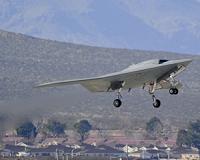| . |  |
. |
New Delhi (UPI) Feb 10, 2011 The Indian army took delivery of the first indigenously designed and developed Nishant unmanned aerial vehicles after the last test flights in Rajasthan state. "Nishant has successfully completed the series of confirmatory trials conducted by the Indian army at Chandan Range in Pokharan recently before the army took delivery of a set of four UAVs together with ground systems," a statement from the government's Defense Research and Development Organization said. "The performance of the pay-load sensors in particular has been better than even the imported UAVs with the army," the DRDO statement said. "It is expected that more of such equipment will soon be purchased by the users." The DRDO's Aeronautical Development Establishment developed the Nishant in conjunction with Defense Electronics Applications Laboratory in Dehradun, Research and Development Establishment Engineers in Pune and Aerial Delivery Research and Development Establishment in Agra. First flight of the 840-pound Nishant was in 1995. The 15-foot-long Nishant has a wingspan of nearly 22 feet and a ceiling of around 11,800 feet. Maximum speed is around 115 mph and turnaround launches can be done within 20 minutes. In 2009, a Nishant was tested using a Wankel rotary engine. The Nishant is rail-launched from a hydro-pneumatic launcher set up on Tatra trucks without the need of a runway, meaning the system is mobile and versatile, the DRDO said. The launcher system can be used around 1,000 times before needing an overhaul. Flight times are up to 4 1/2 hours but the vehicle has parachutes and inflatable underbelly bags allowing it to land in terrain far from its launch site for recovery later. The Nishant joins the subsonic reusable Lakshya UAV for air-to-air and ground-to-air firing practice, designed to train pilots and air defense personnel in engaging targets. The Lakshya was inducted into the Indian air force in 2000, after the navy and army fielded them. The Lakshya has a range of 370 miles, a flight ceiling of 29,504 feet and a maximum speed of about 600 mph. In July, the Army Institute of Technology said its scientists developed a software program that improves landing precision of unmanned aerial vehicles without operator intervention. AIT said its MATrix LABoratory software program increases landing precision of UAVs by up to 97 percent without the need for an operator with a hand-held remote control. "The landing of the UAV will be controlled by the microprocessor, which will recognize previously collected images of the landing space and accordingly guide the UAV in for landing," he said. "There will be no additional increase in the equipment to be fitted, except the conversion of MATLAB software into an equivalent assembling program for the UAV." The state of unmanned aerial vehicle technology will be the focus of a conference in Washington in April. The Institute for Defense and Government Advancement said the Seventh Annual UAV Summit will provide a comprehensive overview of new requirements, emerging policies, latest programs and acquisition efforts for the UAV industry. Briefs will focus on supporting operations in the theater of war, new UAV challenges and developments being seen in the field, advanced perspectives on Small Unmanned Aerial Vehicles and optimizing intelligence, surveillance and reconnaissance tactics and technology.
Share This Article With Planet Earth
Related Links UAV News - Suppliers and Technology
 US Navy X-47B Unmanned Combat Aircraft Completes Historic First Flight
US Navy X-47B Unmanned Combat Aircraft Completes Historic First FlightEdwards AFB CA (SPX) Feb 08, 2011 The Northrop Grumman -built U.S. Navy X-47B Unmanned Combat Air System Demonstration (UCAS-D) aircraft has successfully completed its historic first flight at Edwards Air Force Base (AFB), Calif. Conducted by a U.S. Navy/Northrop Grumman test team, the flight took off at 2:09 p.m. PST and lasted 29 minutes. This event marks a critical step in the program, moving the team forward to meet th ... read more |
|
| The content herein, unless otherwise known to be public domain, are Copyright 1995-2010 - SpaceDaily. AFP and UPI Wire Stories are copyright Agence France-Presse and United Press International. ESA Portal Reports are copyright European Space Agency. All NASA sourced material is public domain. Additional copyrights may apply in whole or part to other bona fide parties. Advertising does not imply endorsement,agreement or approval of any opinions, statements or information provided by SpaceDaily on any Web page published or hosted by SpaceDaily. Privacy Statement |